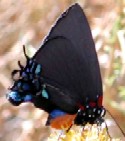Desert Mistletoe
Phoradendron californicum
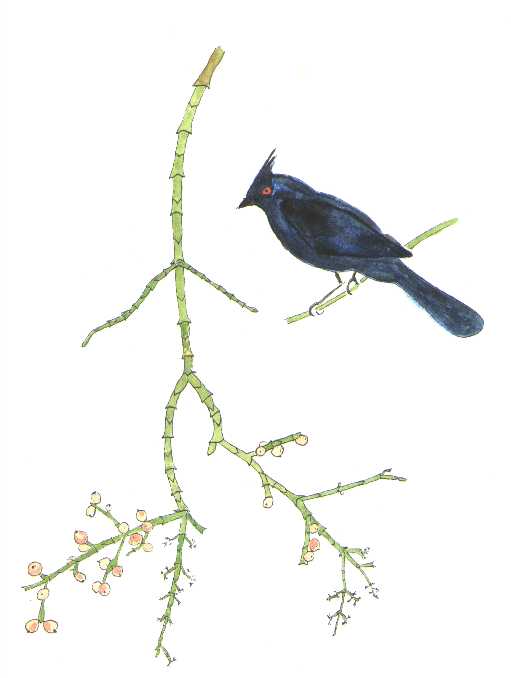
Watercolor from specimen found in the Castle Dome Mountains, La Paz County, Arizona on 23 Feb. 1992. The bird is a male Phainopepla.
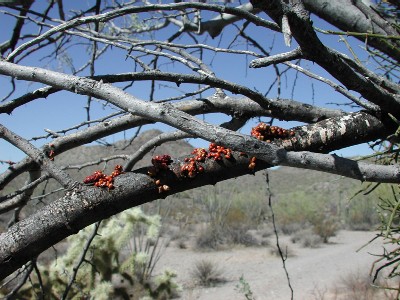
Berries are eaten by birds. The hard seeds are then passed through the alimentary canal or else regurgitated and left on a branch. There they can germinate and establish a root system within the host plant. Location Organ Pipe Cactus NM.
The beautiful butterfly known as the Purple Hairstreak feeds on this plant in the larval (caterpillar) stage.
Great Purple Hairstreak
PARASITIC SHRUB: A pendulous shrub up to a
meter in length growing from the branches of one of the leguminous
trees (Ironwood, Mesquite, Palo Verde, Acacia), infrequently in other woody
plants, even Creosote Bush (Larrea tridentata.
LEAFLESS: Leaves are reduced to scales. Green twigs carry on
photosynthesis but as a parasite it takes up water and nutrients through its
roots that grow into the cambium and xylem of the host.
FLOWERS: Very small greenish-yellow flowers send forth strong, fragrant
perfume from late Jan. to Mar. Males and female blooms on separate plants
(dioeceous). The bright yellow pollen is gathered from male plants by
Honey Bees (Apis mellifera).
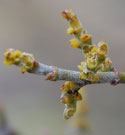
FRUIT: Female plants produce berries that ripen to yellow-salmon color and contain several sticky red seeds. Phainopeplas are the principal vectors of the seeds.
UNARMED. However, the host trees are often very thorny indeed.
RANGE: Common wherever suitable host trees occur. If many large
mistletoe plants become established on a single host tree it may succumb to the
attack and die. Vigorous trees may abort the infected branch, thereby ridding
itself of the parasite. But, consider also that berry-feeding birds deposit
fertilizing guano.
Viscaceae -- Mistletoe Family
Sponsored Links:
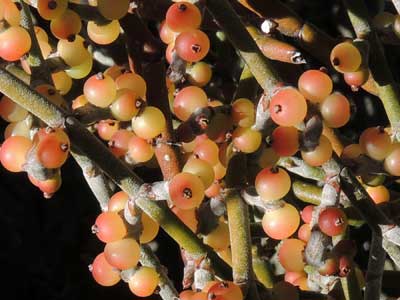
Ripe berries and open flowers were found in the Four Peaks foothills, Maricopa Co., Arizona. 17 Jan. 2015.
